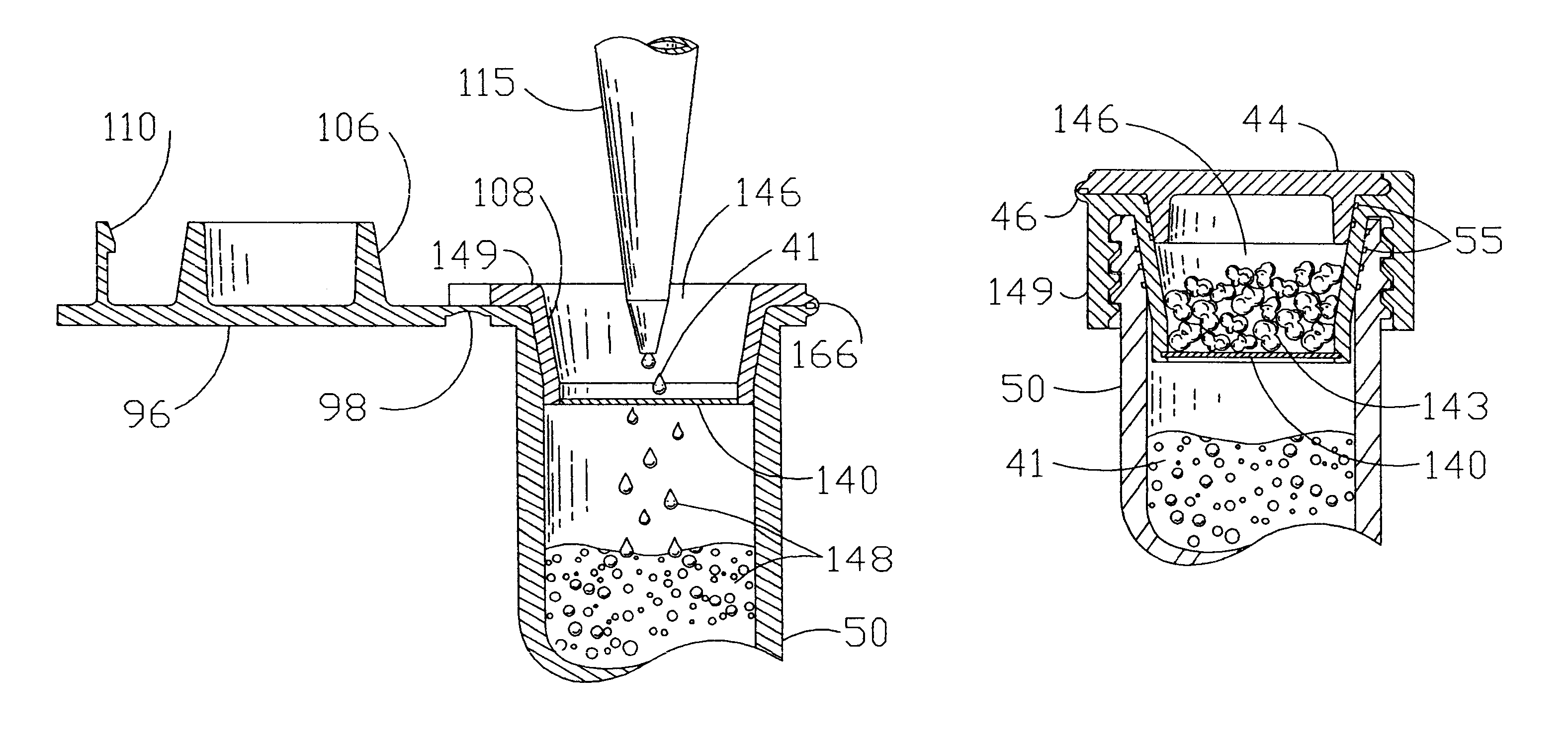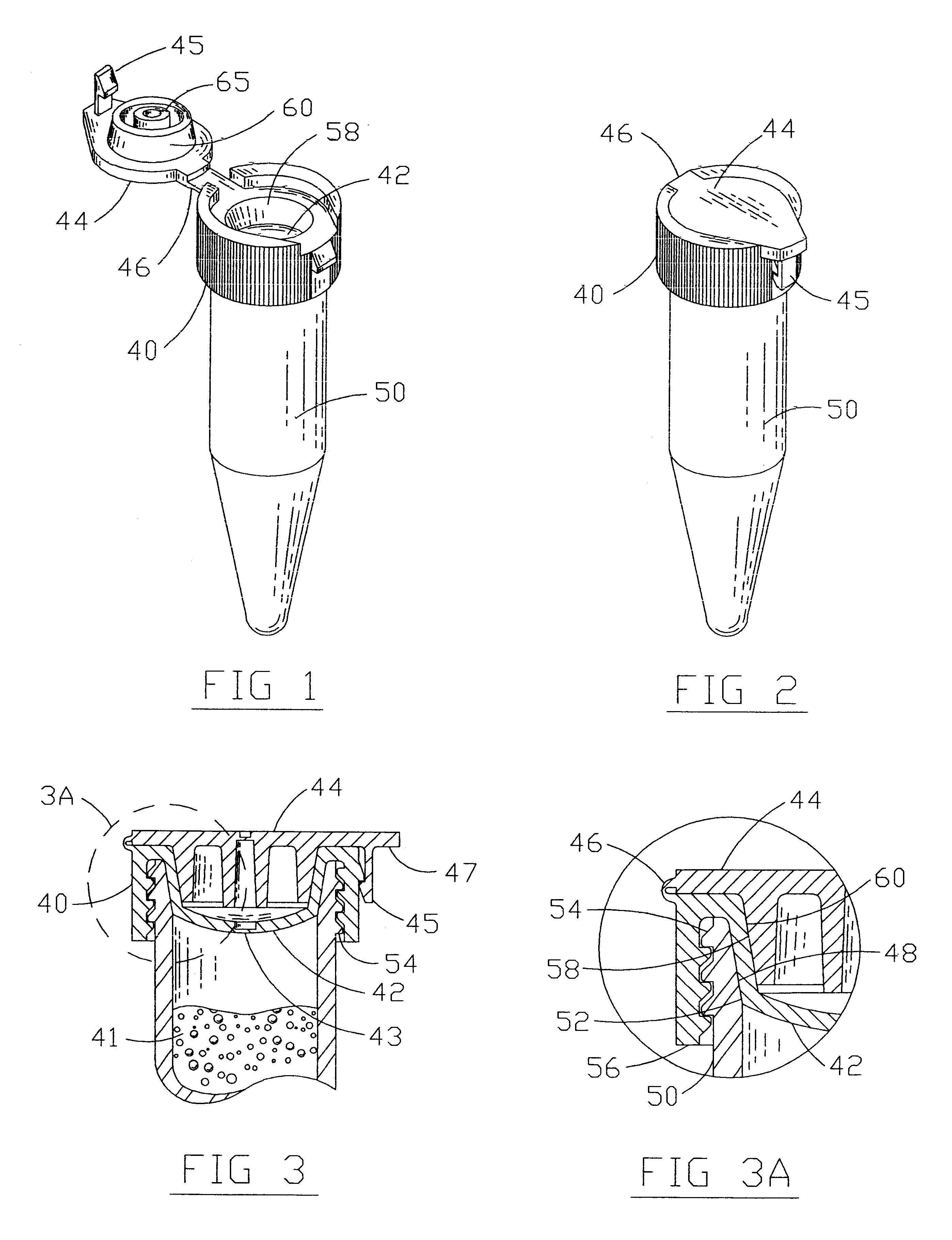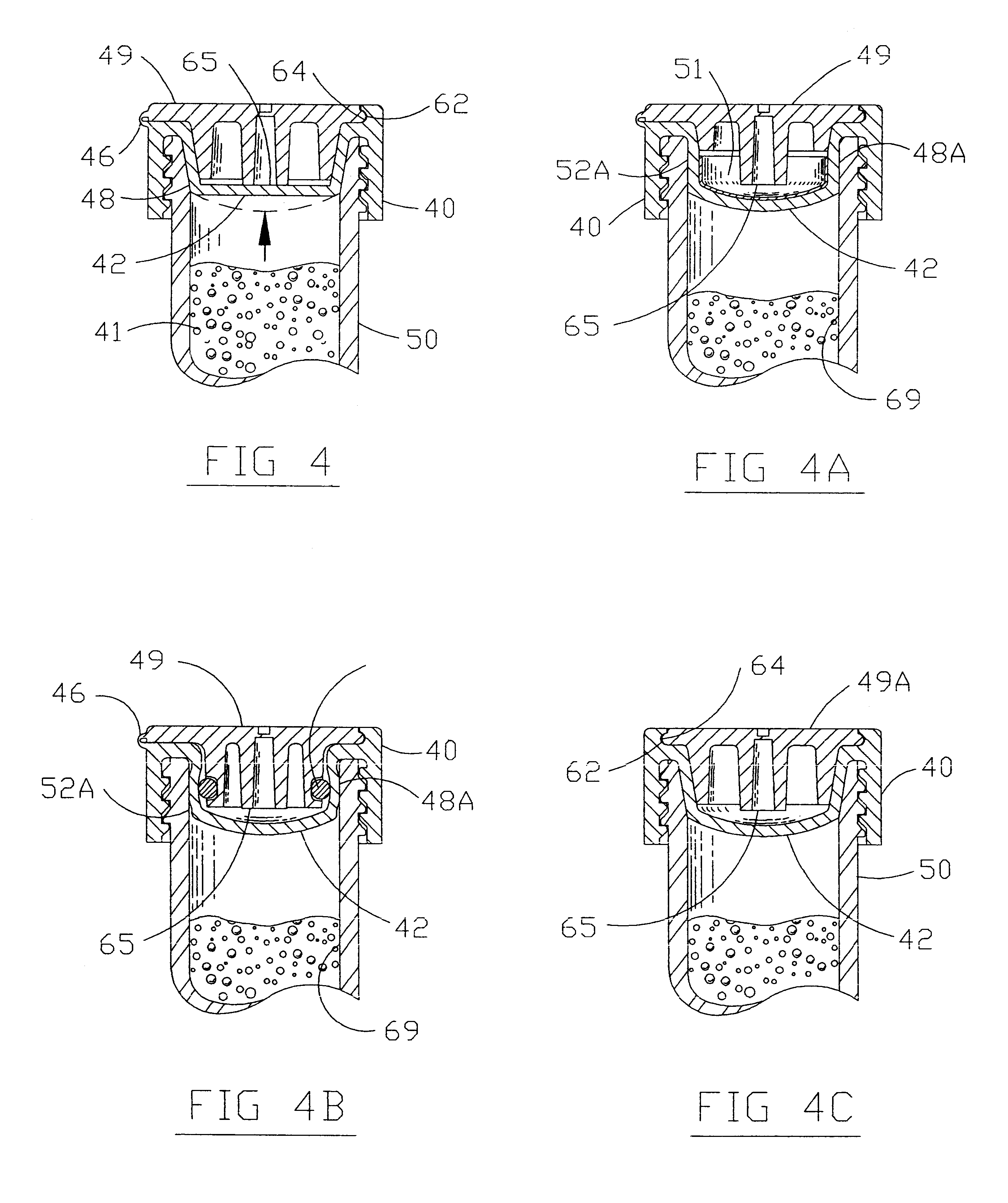Closure device for containers
a technology for sealing devices and containers, which is applied in the field of sealing devices for containers, can solve the problems of product (tubes and caps) approximately 10 times the cost, leakage problems, and potential contamination of not only the added o-ring elastomer used as a sealing ring in the cap, but also the colorant used in the molding of the plastic closur
- Summary
- Abstract
- Description
- Claims
- Application Information
AI Technical Summary
Benefits of technology
Problems solved by technology
Method used
Image
Examples
Embodiment Construction
, Detailed Description and Drawings.
Accordingly to the invention, the problems mentioned above are solved by cap closures that increase the effectiveness of sample containment and withdrawal at a reduced manufacturing cost.
The present invention provides for a threaded cap design that incorporates a pressure responsive diaphragm that increases the sealing effectiveness of the cap when the internal pressures of the container increase during testing or storage (i.e.: centrifugation, heating and freezing). As an improvement to "Sealing Cap for Containers" U.S. Pat. No. 5,513,768, the cap and the container have seamless matting tapered surfaces which increases the sealing contact area as the closure is screwed onto the container and promotes an effective seal. Using the mechanical advantage of the threads to compress the tapered side walls of the caps convex sealing diaphragm, the interference between the cap and its container increases as the cap is rotated downward onto its final seali...
PUM
 Login to View More
Login to View More Abstract
Description
Claims
Application Information
 Login to View More
Login to View More - R&D
- Intellectual Property
- Life Sciences
- Materials
- Tech Scout
- Unparalleled Data Quality
- Higher Quality Content
- 60% Fewer Hallucinations
Browse by: Latest US Patents, China's latest patents, Technical Efficacy Thesaurus, Application Domain, Technology Topic, Popular Technical Reports.
© 2025 PatSnap. All rights reserved.Legal|Privacy policy|Modern Slavery Act Transparency Statement|Sitemap|About US| Contact US: help@patsnap.com



